Brant: The End of the Duel
Annotations
On the right, one of the Dirae, the Dread Ones, appearing as a bird, specifically an owl, flies around the head of Turnus, filling him with fear (843-68). Aeneas pursues Turnus with his large spear, and Turnus holds a massive rock which he attempts to throw at Aeneas (895-914). In the upper left, Juturna sees the owl by Turnus's head and knows it is a sign that Turnus will die (869-84). Grieving, she sinks down into her river (885-6). On the left, Aeneas has hit Turnus with his spear and kneels over the Rutulian hero (919-27). Turnus begs for mercy (929-39), which Aeneas almost grants. Then Aeneas sees the belt of Pallas (940-4) which, in this image, Turnus wears around his waist, and he plunges his sword into the chest of Turnus.
Woodcut illustration from the “Strasbourg Vergil,” edited by Sebastian Brant: Publii Virgilii Maronis Opera cum quinque vulgatis commentariis expolitissimisque figuris atque imaginibus nuper per Sebastianum Brant superadditis (Strasbourg: Johannis Grieninger, 1502), fol. 408v, executed by an anonymous engraver under the direction of Brant.


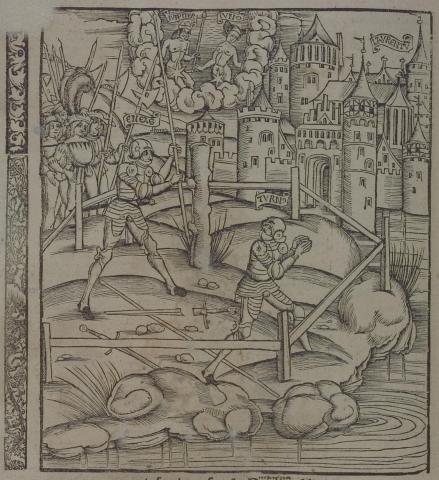

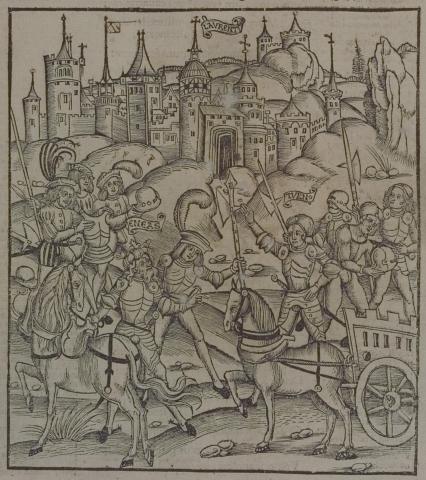
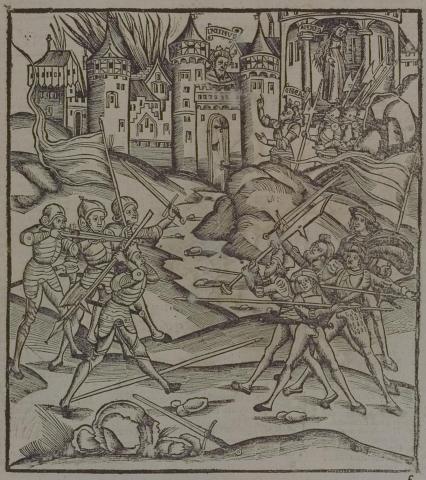
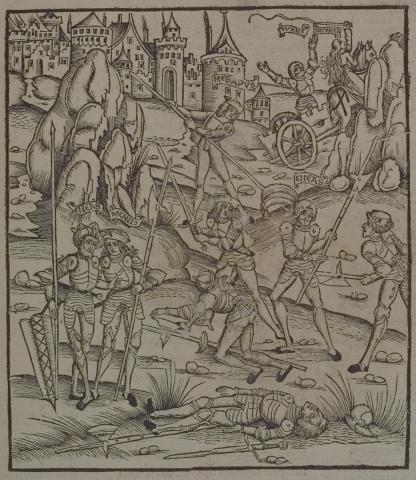
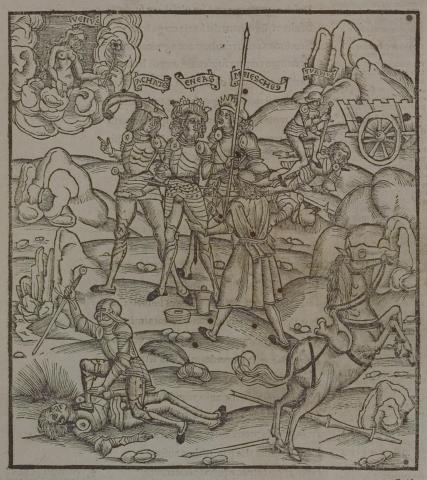
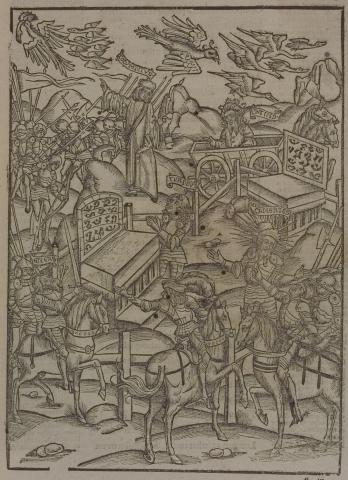
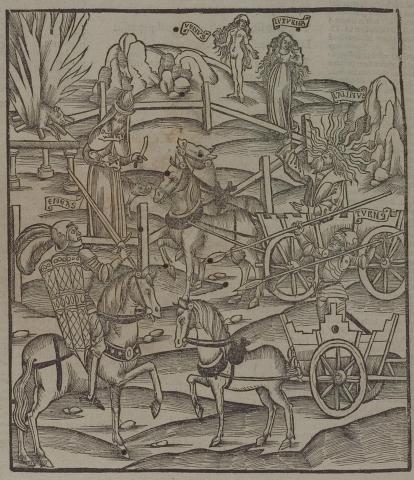
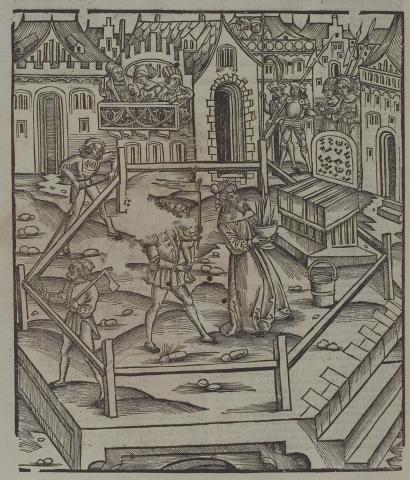
Sebastian Brant (1458-1521) was a humanist scholar of many competencies. Trained in classics and law at the University of Basel, Brant later lectured in jurisprudence there and practiced law in his native city of Strasbourg. While his satirical poem Das Narrenschiff won him considerable standing as a writer, his role in the transmission of Virgil to the Renaissance was at least as important. In 1502 he and Strasbourg printer Johannes Grüninger produced a major edition of Virgil’s works, along with Donatus’ Life and the commentaries of Servius, Landino, and Calderini, with more than two hundred woodcut illustrations. (Annabel Patterson)